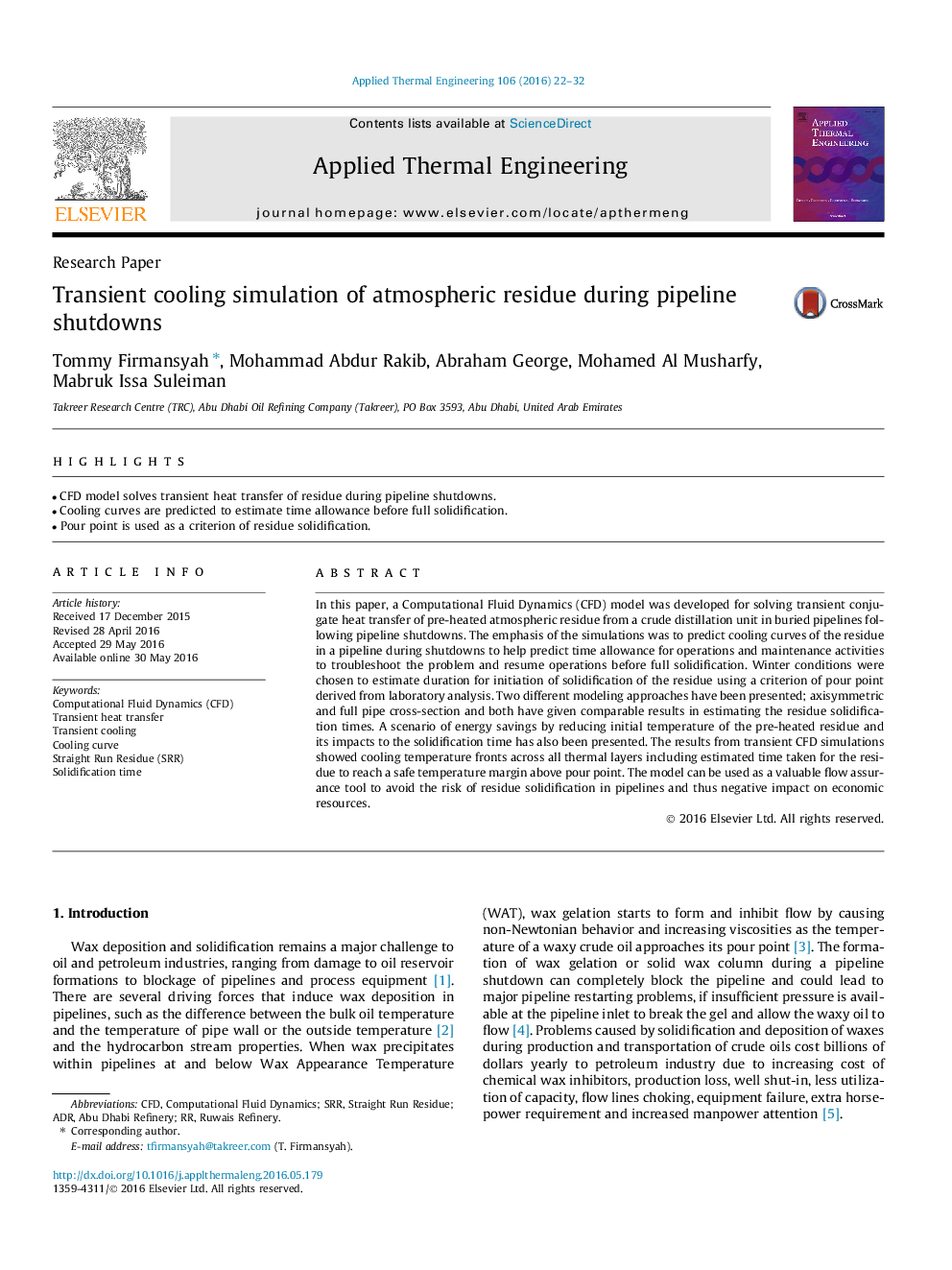| Article ID | Journal | Published Year | Pages | File Type |
|---|---|---|---|---|
| 7047328 | Applied Thermal Engineering | 2016 | 11 Pages |
Abstract
In this paper, a Computational Fluid Dynamics (CFD) model was developed for solving transient conjugate heat transfer of pre-heated atmospheric residue from a crude distillation unit in buried pipelines following pipeline shutdowns. The emphasis of the simulations was to predict cooling curves of the residue in a pipeline during shutdowns to help predict time allowance for operations and maintenance activities to troubleshoot the problem and resume operations before full solidification. Winter conditions were chosen to estimate duration for initiation of solidification of the residue using a criterion of pour point derived from laboratory analysis. Two different modeling approaches have been presented; axisymmetric and full pipe cross-section and both have given comparable results in estimating the residue solidification times. A scenario of energy savings by reducing initial temperature of the pre-heated residue and its impacts to the solidification time has also been presented. The results from transient CFD simulations showed cooling temperature fronts across all thermal layers including estimated time taken for the residue to reach a safe temperature margin above pour point. The model can be used as a valuable flow assurance tool to avoid the risk of residue solidification in pipelines and thus negative impact on economic resources.
Keywords
Related Topics
Physical Sciences and Engineering
Chemical Engineering
Fluid Flow and Transfer Processes
Authors
Tommy Firmansyah, Mohammad Abdur Rakib, Abraham George, Mohamed Al Musharfy, Mabruk Issa Suleiman,
